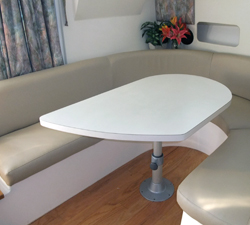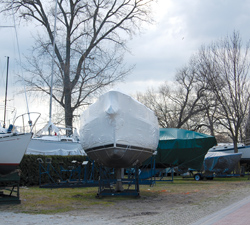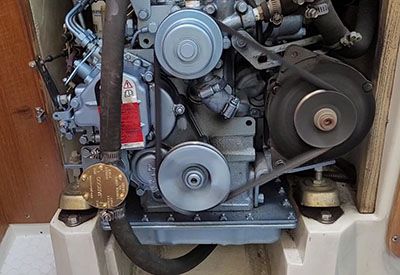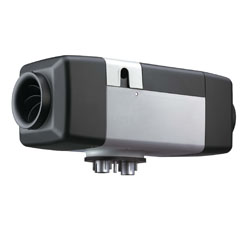Antifouling: More Than One Way To Think Green
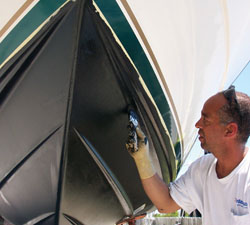
Well it’s spring and time to organize most people’s least favourite spring outfitting job. Time to get the bottom painted. These days, when it comes to antifouling paints, we need to consider not just the cost to ourselves, but also the cost to the environment. With a little education, boaters can make both a green and a cost-effective decision for their antifouling paint.
First, a little history. From early days, copper in various forms, from copper sheathing to cuprous oxide in paint was the best available biocide for antifouling. Remember TBT (tributyltin). When it was introduced in the 1970s it seemed to deliver what everybody wanted. TBT was very effective in preventing slime and algae growth, as well as in discouraging the various little critters that love to attach themselves to boats. It came in nice strong colours and it was safe to use on aluminium hulls and outdrives. The only problem was that it was just too effective against the critters and carried on attacking them long after it had left the bottom of the boat. Research began to show negative effects on the marine environment and, by the late 1980s, TBT had been banned for recreational boats in both Europe and North America.
So, it was back to the future for paint manufacturers. With the switch back to copper, several issues became apparent. First it was not safe to use on aluminium and second, copper is much less effective against slime and algae. Today, all the major paint companies are spending millions of dollars on research into effective and environmentally safe antifouling paints and finishes.
Broadly speaking we now have two basic choices in antifouling: hard finishes and soft finishes. Soft paints, known as ablative, are meant to wear away as the boat moves through the water, continually exposing fresh biocide. This has the advantage of a controlled release of biocide and other points, which I’ll touch on later.
Hard finish antifouling paints do not wear away in the manner of an ablative, but begin to release their biocide immediately on contact with the water. After launching, the biocide is depleted in a fairly short time, usually 6 months or so. Traditional copper-based antifouling paints are moderately hard and may make sense in areas where the boat is used for a short season. Harder antifouling paints are practical for boats that are trailered or where owners want to be able to scrub the bottom during the season, something you cannot do with an ablative paint.
Hard antifouling, which needs to be renewed each season, builds up over time. Eventually this accumulated paint has to be removed in a messy and time-consuming job. Increasingly, environmental agencies are casting a critical eye on just what happens to the waste scrapings and disposal will become more expensive and problematic over time. Teflon®-based paints are another popular type of hard antifouling. These provide a very durable slick surface that discourages fouling and can be polished to a smooth finish. Paints such a VC17 from Interlux are popular with the racing crowd. Research continues on these smooth surface paints with the goal of an effective non-toxic finish. We’re not there yet and Teflon® paints still do have the disadvantage of building up over time.
When looking at the environmental impact of antifouling paints, there are two basic factors to consider: first, what happens above water. That is to say, the effect of volatile organic compounds (VOC) emissions during application and also, the disposal of waste after cleaning. VOCs are solvents that get released into the air as the paint dries.
The second is the impact on the marine environment once the paint is immersed and begins to release its biocide. The type and composition of these biocides is an area of continuing research at all paint companies. Work continues on various organic-based biocides, but at this time copper is still the most common.
For dealing with the problem of VOCs, the thrust of research has been in water-based paints and all the major paint companies are working on these formulations. Several, such as Aquagard, are on the market now. With water-based paint, there are no harmful VOCs. This eliminates ventilation problems with shop application; makes for easier cleanup-up and no there are no serious disposal issues for waste product.
When considering the environmental impact of any antifouling, it is always important to look at all the factors involved. An ablative antifouling such as Micron CSC from Interlux, while it does not solve the VOC issue, still has a positive impact on the environment. The fact that the paint wears away in a controlled fashion, releasing its biocide over a longer period, means lower concentrations of toxins in the water. The ability to overcoat an ablative paint with no sanding or nasty paint stripper means no messy cleanup and therefore no toxic waste. The effectiveness of the paint translates into less fuel per mile and lower cost over time.
The effectiveness of any particular paint varies depending on where it is being used. The amount of fouling can vary a great deal even in a small area, even in the same marina, depending on factors such a water flow, salinity, pollution, etc.
When I spoke with the representatives of International Paints and Aquagard, while each made a case for the advantages of their product, one issue they both mentioned was that the Canadian boater has a more limited product choice than does his or her US counterpart. This is due to the fact that Canada does not accept US data at face value, but needs to conduct its own tests for each ingredient in any new antifouling product. There may be perfectly good reasons for this, but it does slow down the introduction of new products into our market. The cost to a manufacturer for testing and even special labelling may not be warranted in some cases, given the relatively small volume of paint sold.
Tips For an Easier and More Effective Bottom Paint Job
While regular paint covers about 500 sq. ft. per gallon, antifouling paint covers only about 300 sq. ft. To know how much you will paint you need multiply your boat’s length by the beam and calculate 90% of that.
Whenever possible, use wet sandpaper rather than dry.
Protect yourself! Never spray solvent based antifouling. Wear goggles and a good respirator with the correct filter, for vapour or dust, depending on the job.
You should only paint in an area with good ventilation and stop immediately if you feel any adverse reaction to the fumes, such as headache or nausea.
Keep yourself covered; a tyvek suit is best. Wear good rubber gloves.
Put the sacrificial zincs on before you paint for best conductivity and don’t paint the zinc itself.
Always read the labels!
Get everything prepared in advance so you spend as little time as possible under the boat.
Antifouling paints need to be constantly stirred to ensure the even distribution of the toxin.
Short nap rollers are best, thicker ones become gummed up in short order.
It’s a good idea to shower after painting to remove any possible traces of toxin from your skin.
The most important thing to remember is that movement through the water retards to growth of any fouling. Indeed, ablative paints only work effectively through the friction of water over the hull. So the bottom line is, whatever paint you chose, use your boat!
By Glen Cairns

